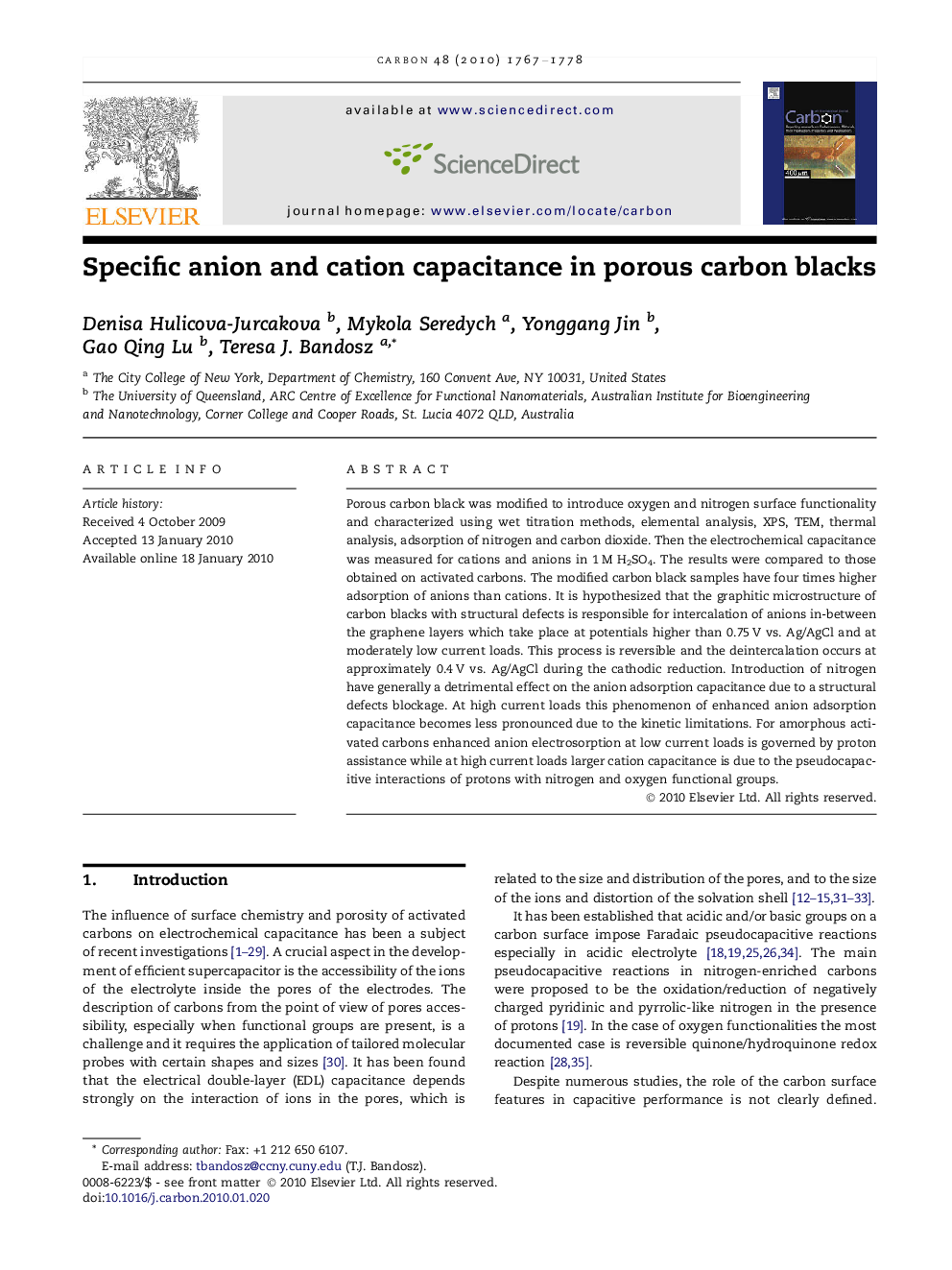| کد مقاله | کد نشریه | سال انتشار | مقاله انگلیسی | نسخه تمام متن |
|---|---|---|---|---|
| 1416181 | 985944 | 2010 | 12 صفحه PDF | دانلود رایگان |

Porous carbon black was modified to introduce oxygen and nitrogen surface functionality and characterized using wet titration methods, elemental analysis, XPS, TEM, thermal analysis, adsorption of nitrogen and carbon dioxide. Then the electrochemical capacitance was measured for cations and anions in 1 M H2SO4. The results were compared to those obtained on activated carbons. The modified carbon black samples have four times higher adsorption of anions than cations. It is hypothesized that the graphitic microstructure of carbon blacks with structural defects is responsible for intercalation of anions in-between the graphene layers which take place at potentials higher than 0.75 V vs. Ag/AgCl and at moderately low current loads. This process is reversible and the deintercalation occurs at approximately 0.4 V vs. Ag/AgCl during the cathodic reduction. Introduction of nitrogen have generally a detrimental effect on the anion adsorption capacitance due to a structural defects blockage. At high current loads this phenomenon of enhanced anion adsorption capacitance becomes less pronounced due to the kinetic limitations. For amorphous activated carbons enhanced anion electrosorption at low current loads is governed by proton assistance while at high current loads larger cation capacitance is due to the pseudocapacitive interactions of protons with nitrogen and oxygen functional groups.
Journal: Carbon - Volume 48, Issue 6, May 2010, Pages 1767–1778